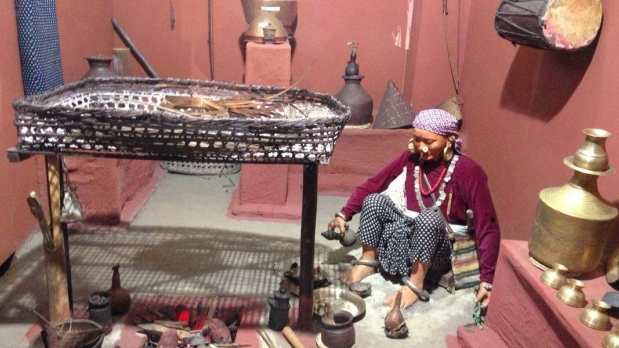Genesis of Magar

According to their mythology, the Magars evolved from two types of caves namely--Pelma Khar Pu (barely dispersing cave) and Yoma Khar Pu (Hornet's cave) and scattered in all four direction.
But there are also interesting mythical story which describes how Magars where originated, According to the legend, in the place called Seem, there lived two brothers named-- See Magar and Chintoo Magar who had differences and thus See Magar remained in the place while another Chintoo Magar migrated to the place called Kangwachen, southern part of Sikkim, who lived in Sikkim, had family members. After due period years, Magar-- the family members of Chintoo Magar named Sintoo Sati Sheng became very powerful and ruled Sikkim in a despotic manner. He was then conspired and poisoned Magar by Bhotia, the tribal of Sikkim and ruled, then Magars had to migrate, then, they were believed to have migrated to Simrongadh and slowly to Bara Magarath region (the Kingdoms east of the Gandaki River)
Similarly there is similar story that how Magar especially the Kham, living in the Athara Magaranth had originated. There were four brothers, so says the legend, and one day they went hunting but got lost. They camped at a place and distributed the chores to do. From these four brothers the various jats or tribes emanated. The first tribe was the Bahun Magar (the eldest brother’s tribe), then come the Thakuri Magar (the second eldest brother), then the Khas Magar (the third brother) and lastly the Kami Magar (the youngest brother). Thus the Khas Magar became the Kham Magar of today, it is said.
About Nepal Magar Tourism Society
Nepal Magar Tourism Society (NMTS)--the name itself is pretty self-explanatory that who we are and what we do. It was founded in the year 2010, with the aim to unite all the Magar tourism entrepreneurs from across the country and outside and promote tourism--together. It is a non-profit, non-governmental, and non-political organization formally registered with the District Administration Office, Kathmandu ...
read moreAbout Magar
Magar is one, of the 59 indigenous peoples of Nepal, recognized by the government as indigenous nationalities having own distinct language, culture, rituals and history. Their settlements stretch over the western and southern edges of Dhaulagiri Himalayan range and eastwards to the Gandaki River basin ...
read moreQuick Inquiry